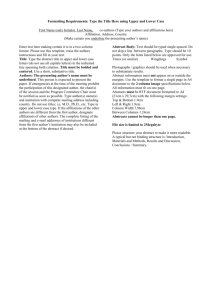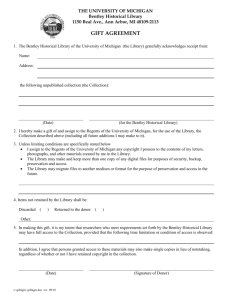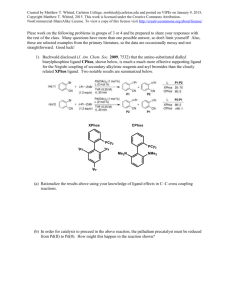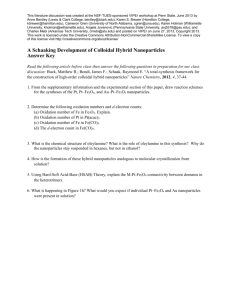Fe2GeS4 nanocrystals
advertisement
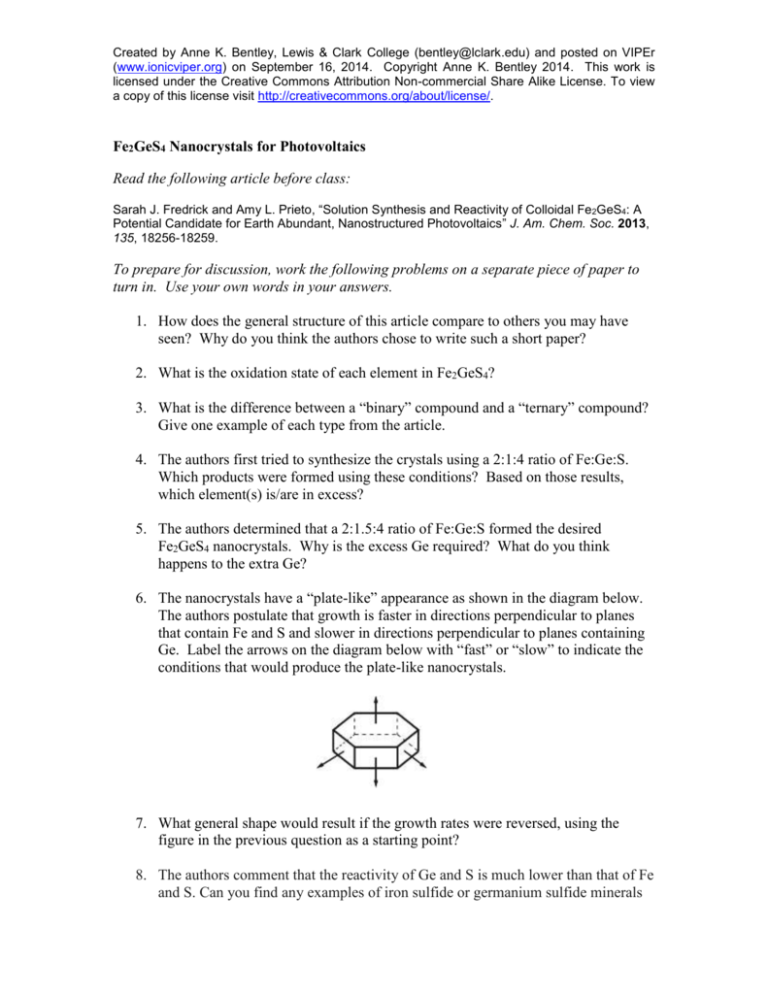
Created by Anne K. Bentley, Lewis & Clark College (bentley@lclark.edu) and posted on VIPEr (www.ionicviper.org) on September 16, 2014. Copyright Anne K. Bentley 2014. This work is licensed under the Creative Commons Attribution Non-commercial Share Alike License. To view a copy of this license visit http://creativecommons.org/about/license/. Fe2GeS4 Nanocrystals for Photovoltaics Read the following article before class: Sarah J. Fredrick and Amy L. Prieto, “Solution Synthesis and Reactivity of Colloidal Fe2GeS4: A Potential Candidate for Earth Abundant, Nanostructured Photovoltaics” J. Am. Chem. Soc. 2013, 135, 18256-18259. To prepare for discussion, work the following problems on a separate piece of paper to turn in. Use your own words in your answers. 1. How does the general structure of this article compare to others you may have seen? Why do you think the authors chose to write such a short paper? 2. What is the oxidation state of each element in Fe2GeS4? 3. What is the difference between a “binary” compound and a “ternary” compound? Give one example of each type from the article. 4. The authors first tried to synthesize the crystals using a 2:1:4 ratio of Fe:Ge:S. Which products were formed using these conditions? Based on those results, which element(s) is/are in excess? 5. The authors determined that a 2:1.5:4 ratio of Fe:Ge:S formed the desired Fe2GeS4 nanocrystals. Why is the excess Ge required? What do you think happens to the extra Ge? 6. The nanocrystals have a “plate-like” appearance as shown in the diagram below. The authors postulate that growth is faster in directions perpendicular to planes that contain Fe and S and slower in directions perpendicular to planes containing Ge. Label the arrows on the diagram below with “fast” or “slow” to indicate the conditions that would produce the plate-like nanocrystals. 7. What general shape would result if the growth rates were reversed, using the figure in the previous question as a starting point? 8. The authors comment that the reactivity of Ge and S is much lower than that of Fe and S. Can you find any examples of iron sulfide or germanium sulfide minerals Created by Anne K. Bentley, Lewis & Clark College (bentley@lclark.edu) and posted on VIPEr (www.ionicviper.org) on September 16, 2014. Copyright Anne K. Bentley 2014. This work is licensed under the Creative Commons Attribution Non-commercial Share Alike License. To view a copy of this license visit http://creativecommons.org/about/license/. that are naturally-occurring? What does it mean when these types of compounds are "naturally-occurring" in chemical terms? 9. Figures 3 and 4 show XPS spectra of Fe and Ge after exposure to air for increasing periods of time. How does the environment and/or oxidation state of Fe change over 24 hours? How does Ge compare? 10. Draw the ligand field splitting diagram for the five d orbitals in an octahedral ligand field. Do you expect the sulfide ions to be strong field or weak field ligands? Populate your diagram with the appropriate number of electrons for Fe(II). 11. Using your diagram from the previous question, describe the “challenges often associated with the electronic transitions present for octahedral Fe(II)” mentioned as a reason for the gradual onset of UV-vis absorption. 12. Which figures in the supplemental information show the generation of photocurrent? Draw a diagram or sketch of the photocurrent experiment. How did the authors know the photocurrent was p-type? 13. Why did the authors carry out a ligand exchange experiment? Why do you think the authors chose a sulfide anion for the ligand exchange? Why would something like this slow oxidation when compared with the HDA capping ligand? 14. Do you think this material is a good choice for solar cells? Why or why not?







